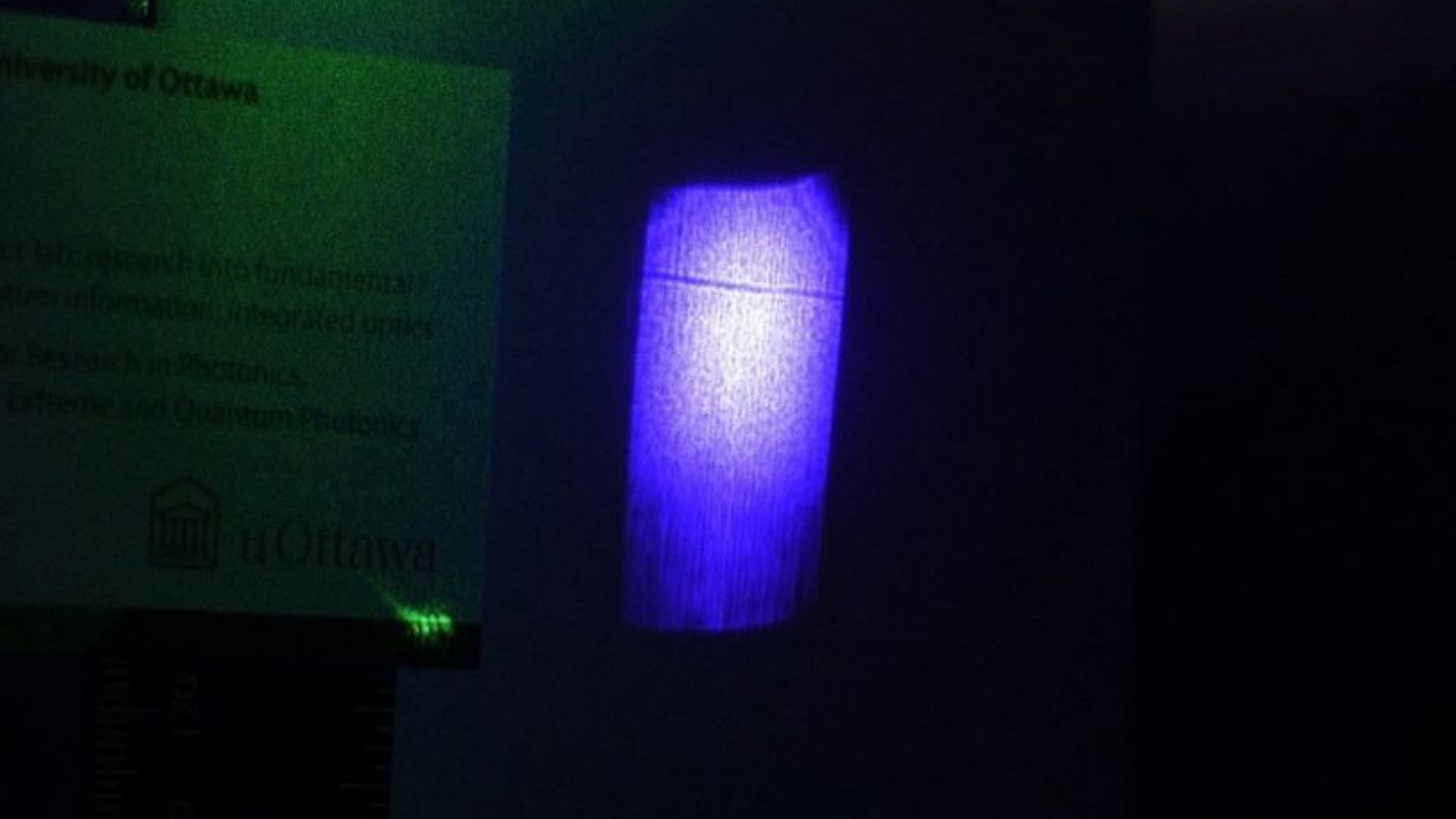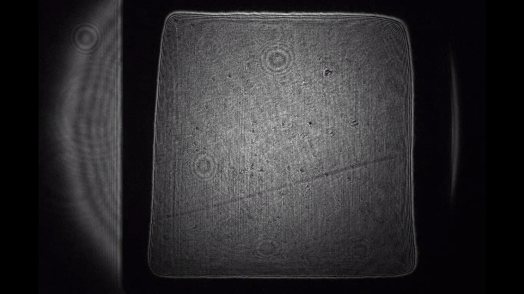
A quirk in scientific 3D modeling has led to the discovery that laser light can — under the right circumstances — cast its own shadow.
The finding challenges our current understanding of what a shadow is, researchers wrote in a new paper published Nov. 14 in the journal Optica.
"Laser light casting a shadow was previously thought impossible since light usually passes through other light without interacting," study co-author Raphael Abrahao, a physicist at Brookhaven National Laboratory, said in a statement. "Our demonstration of a very counter-intuitive optical effect invites us to reconsider our notion of shadow."
Imagine shining two flashlight beams through each other — neither one blocks the other. However, some 3D computer models of laser systems depict the laser beam as a cylinder. Those models give the simulated laser beam its own shadow because they treat it as a solid object instead of a ray of light. During a lunchtime conversation about this quirk of the modeling system, some of the scientists wondered whether they could replicate the phenomenon with a real beam.
""What started as a funny discussion over lunch led to a conversation on the physics of lasers and the nonlinear optical response of materials,"" Abrahao said in the statement. "From there, we decided to conduct an experiment to demonstrate the shadow of a laser beam."

The researchers set up an experiment with a ruby crystal, a popular material for studying unusual properties of light. They directed a green laser and a blue laser into the ruby at right angles to each other. On a screen opposite the blue laser, they saw a dark line where the green laser blocked blue light leaving the crystal.
This curious phenomenon arises from a property of the ruby itself. When the green laser encounters atoms along its path through the crystal, it gives the electrons in those atoms a bit of extra energy. In their high-energy state, those electrons can absorb blue light from the second laser. The green laser beam thus behaves like an object, blocking the blue light and casting a dark line across the screen.
That dark line meets all the criteria for a shadow: it was visible by eye, it took the shape of an object blocking illumination and it moved as the researchers moved the green laser.
The scientists also found that they could tune the intensity of the green laser to create a darker or lighter shadow. The maximum contrast between illuminated and shadowed areas on the screen was about 22%, similar to the contrast of a tree's shadow on a sunny day.
""This discovery expands our understanding of light-matter interactions and opens up new possibilities for utilizing light in ways we hadn't considered before,"" Abrahao said in the statement.
This finding could prove useful in various fields, Abrahao added. One example is optical switching in devices that rely on light to control the presence of another light, or in technologies that require precise control of light transmission, such as high-powered lasers.







